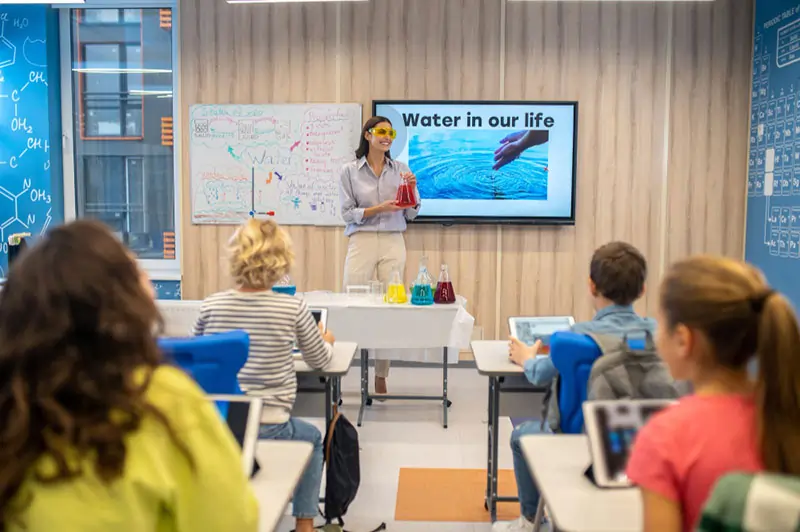Educational Evolution: Unveiling the Numbers Behind Online Learning Trends

For people and society as a whole, online education is revolutionary. It removes obstacles that stop students from fully embracing higher education and promotes access and flexibility. The National Center for Education Statistics reports that in 2022, over 25% of students were considered to be online learners. This means that they relied only on digital solutions to acquire new skills and achieve credentials. However, many others found hybrid learning to be quite beneficial; more than 50% reported taking some classes online.
Although the pandemic and the necessity for distant solutions contributed to the rise of online learning, its appeal has persisted even after in-person chances have been replaced by less stringent regulations. These days, online education is seen by both students and companies as a dependable and strong instrument for skill growth and career progression.
A small number of students are still wary about the potential lack of immersion and connection in online programs, despite the growing number of students who are excited about Online Learning Trends. Keep reading to find out the current state of online education and its potential future developments.
Current educational trends
Recent years have seen five significant shifts in the educational landscape:
Prioritization of hands-on experience
The field of education has always maintained a certain level of stability, relying heavily on theoretical knowledge. The quantity of practical, real-world information included in the instructional techniques has been drastically reduced. Knowledge gained via experience, rather than theory, is becoming more valued by both students and professionals. Teachers now use a new approach that incorporates hands-on activities designed to spark children’s imaginations and encourage them to think outside the box.
Researching potential careers before deciding on a course of study
One reason for the increase in graduate unemployment is the educational paradigm, which is less practical and more theoretical. Students are more likely to pass college when taught theoretically because they retain more of what they learn. Unfortunately, there are no prospects for pupils to enhance their skills through this online educational style, thus they will not be able to secure employment. Students are now more likely to seek out skill-based and practical courses that will provide them with the necessary knowledge and improve their chances of finding a job after graduation.
The brief course’s widespread appeal
The students who are unable to secure employment would you please consider them? The use of private universities to provide industry-specific short courses has become more common in recent years. Participation in these often lasts anywhere from six months to a year, and when students finish, they have a whole new set of skills to call their own. These classes are designed to teach you what you need to know about your field in the least amount of time possible. Several schools boast that their in-house training cells can secure students a job. To acquire entry-level positions, students complete these classes, whether they graduate or not.
E-learning and online education in many sectors
With the use of graphics and videos, online platforms provide students in grades 6–12 with a solid grasp of course material and modules. Some parents have begun to investigate these options and have begun to teach their children using their smartphones or computers. Because they allow for more participation, many students in higher education choose these kinds of Online Learning Trends over more conventional classroom settings.
Earning more credentials
One of the most telling indicators of competence in a certain field, next to a degree, are certificates. Companies are constantly on the lookout for certifications as a means to evaluate potential employees. To advance in their jobs or get access to better prospects, many students and professionals choose to take short-term or online certification courses. These certificate-focused online courses have recently been offered by several EduTech organizations.
Many Forms of Distance Education
There are a variety of online learning options available to meet the needs of students with varying learning styles and preferences. Synchronous, asynchronous, and hybrid learning models are the three primary categories of online education that will be discussed in this section.
Learning in Real Time Through the Web
When teachers and students engage in real-time communication using online platforms like video conferencing or virtual classrooms, this type of learning is known as synchronous online learning. This structure mimics the feel of a conventional classroom by allowing for real-time participation and feedback.
Online Learning That Occurs at Random
On the other side, asynchronous online learning allows students to work at their speed and uses pre-recorded lessons. Learning is made more flexible and independent when students may access course materials whenever they want and do assignments when they want.
Mixed Methods of Instruction
The term “blended learning” refers to a method of education that mixes traditional classroom instruction with Internet resources. With this method, students with a wide range of learning styles may receive an education that is both engaging and tailored to their requirements.
Looking Ahead
Artificial Intelligence (AI)
Using a plethora of student data, Online Learning Trends powered by Artificial Intelligence (AI) will personalize material to suit the distinct requirements and tastes of various student demographics. Digital coursework may be approached with a uniquely personalized approach with the help of these online educational tools.
Virtual and Augmented Reality
Several online courses currently make excellent use of VR and AR technologies. This approach has been widely used in many engineering schools and is also popular with nursing students as a means of introducing them to clinical principles. Virtual reality and augmented reality enhance online learning by immersing students and enabling them to view subjects from several angles.
Ending Remarks
When all is said and done, the year 2024 and beyond hold limitless potential for online education. Several trends are changing the face of education and providing new opportunities for students all over the globe. These include things like the rise of micro-credentials and collaborative partnerships, improvements in learning management system technology, shifts in instructional design, and the continued popularity of online learning among students. With the adoption of these trends, we are getting closer to the day when online education can truly empower individuals, change lives, and foster community.


